banjo playing archaeologist with interests in craftsmanship, art, music, leatherwork, minimalism, low-tech solutions, pre-industrial society primary blog is at http://paleotool.com
Don't wanna be here? Send us removal request.
Text
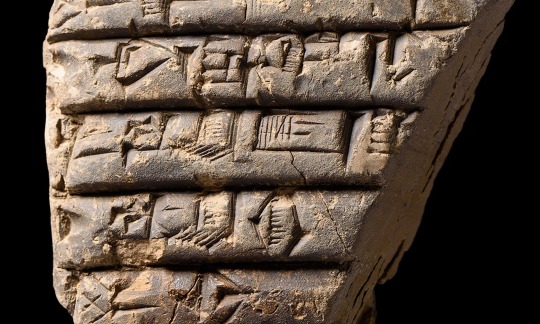
Part of one of the hundreds of administrative tablets discovered at the Sumerian site of Girsu.

The tablets were found at the site of a large state archive building, made of mud-brick walls and divided into rooms or offices. (source)
35 notes
·
View notes
Text

Attic bowl depicting a javelin thrower
5th century BC
Altes Museum Berlin F 2728
6 notes
·
View notes
Photo



~Tetradrachm of Chalkidian League with head of Apollo. Culture: Greek Period: Classical Period Date: 412–410 B.C. Mint: Olynthos (Chalkidian League), Macedonia
320 notes
·
View notes
Text

krater decorated with ganymede | c. 500 - 490 BCE | berlin painter, athenian. found in central italy.
in the louvre collection
315 notes
·
View notes
Photo

Zeus Ammon, Greek original 5th century BC, Glyptothek Museum, Munich.
927 notes
·
View notes
Text
Fresco with a glass fruit bowl with apples, grapes and pomegranates, an amphora for 'garum' (a fish sauce) and a vase, possibly containing small Syrian figs - from Pompeii - National Archaeological Museum, Naples

(English / Español / Italiano)
Fresco con un frutero de vidrio con manzanas, uvas y granadas, un ánfora para "garum" (una salsa de pescado) y un jarrón, posiblemente conteniendo pequeños higos sirios - de Pompeya - Museo Arqueológico Nacional de Nápoles
-----------------------------------------------------------------------------
Affresco con fruttiera di vetro con mele, uva e melagrane, un'anfora per "garum" (un sugo di pesce) e un vaso, forse contenente piccoli fichi siriani - da Pompei - Museo Archeologico Nazionale di Napoli
Source: Amici del Museo Archeologico di Napoli by Antonio Esposito Marroccella
10 notes
·
View notes
Text

Roman Depiction of Christ, Hinton St Mary, The British Museum, London
This is the central roundel of a 4th-century CE mosaic floor from a villa at Hinton St Mary. Dorset. It is one of the most important early Christian remains from the Roman Empire.
The roundel is probably the earliest known mosaic picture of Christ. It is the focal point of the main floor in the position usually occupied by a figure of a pagan god or goddess. However, the Greek letters X and P (chi and rho) behind the head indicate that the person is probably Christ. They are the first two letters of the word Christ in Greek and the usual symbol of early Christianity. At either side are pomegranates, signalling immortality.
260 notes
·
View notes
Text
Irish mermaids with two tails

While mermaids abound in Irish folklore, two tailed sirens are churches are relatively rare. Two tailed sirens are popular in Romanesque art and architecture, but that style was never as popular in Ireland as it was in the rest of mainland Europe, and relatively few churches were constructed in that style. In addition, it’s possible that sheela-na-gigs, an exhibitionist sculpture with a complicated history, made Romanesque sirens less enticing.
Let’s take a look at two examples of Irish mermaids with two tails.


Two tailed mermaid. Georgian Period, between 1700-1850 White sandstone, Inv. No.: 1981.0170. Limerick City Museum, Ireland.
This siren is pretty but melancholy, her two tails crossed demurely, her long hair flowing down over her shoulders.

Folio 200r, pdf of the Book of Kells via Trinity College Dublin, The University of Dublin.
In the lavishly illustrated Book of Kells, a two-tailed mermaid with her tails in intricate Celtics knots peeks out from the pages of the genealogy of Christ. The twists in the mermaid’s body might represent the contortions in her soul. In medieval Christian art, knots and loops sometimes symbolize internal conflict.
I will likely do a post exploring sheela-na-gig imagery, as I find her really interesting. These siren's "braided" tails remind me of the Etruscan Typhon, though the imagery is almost certainly not connected.
Sources
Henry, Françoise. The Book of Kells: Reproductions from the Manuscript in Trinity College in Dublin. New York: Alfred. A. Knopf, 1974.
Higgins, Jim. Irish Mermaids: Sirens, Temptresses and Their Symbolism in Art, Architecture, and Folklore. Galway, Ireland: The Crow's Rock Press, 1995.
[87] The twin-tailed sirens are not as common in England as on the continent of Europe: Druce, G.C. "Some Abnormal and Composite Human Forms in English Church Architecture." In The Archaeological Journal, 135-86. London: The Council of the Royal Archaeological Institute of Great Britain and Ireland, 1915. page 177.
See also, page 368: Allen, J. Romilly. Early Christian Symbolism in Great Britain and Ireland before the Thirteenth Century. London: Whiting & Co, 1887.
Woodcock, Alex. "Sirens." In Liminal Images: Aspects of Medieval Architectural Sculpture in the South of England from the Eleventh to the Sixteenth Centuries, 89-108. Oxford: John and Erica Hedges Ltd., 2005. pages 89, 100 and 102.
See also: Pearson, Terry. "The Mermaid in the Church." In Profane Images in Marginal Arts of the Middle Ages, edited by Elaine C. Block. Turnhout: Brepols Publishers, 2009.
My own observation: from a list of misericords in England, out of ten mermaids/sirens listed, only one has two tails (pages 80-81, Remnant, G.L. A Catalogue of Misericords in Great Britain. Oxford: Oxford University Press, 1969.) The rest are single tailed.
5 notes
·
View notes
Text
Another gem from my latest ROM visit that filled me with immeasurable glee:
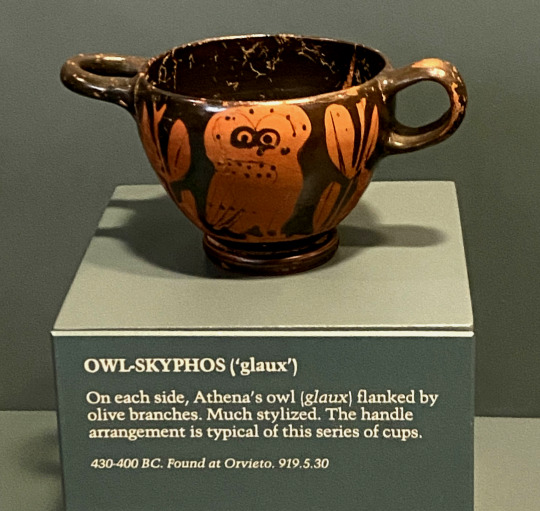
Look at that little owl!! He's so goofy and cute and so dear to me and so so very clearly a LITTLE OWL (Athene Noctua) which is, of course, the species of owl that represents Athena
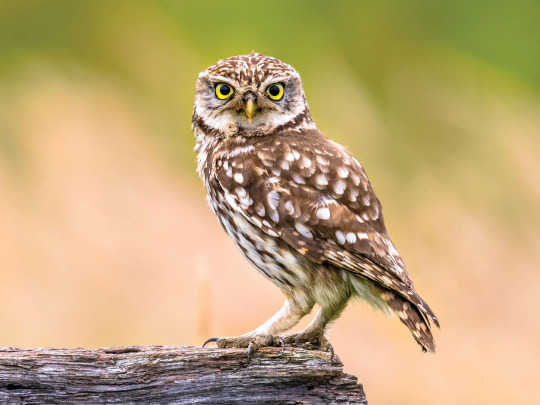
Look at how small that little guy is:

Athena holding a helmet and a spear, with an owl. Attributed to the Brygos Painter (c. 490–480 BC). The Metropolitan Museum of Art. And, look at these incredible further examples cute little owls in pottery:

Armed owl. Attic red-figure Anthesteria oinochoe, ca. 410–390 BC

Skyphos with Owl between two branches of olive wood. Attic red-figure pottery. Archaeological National Museum of Spain.
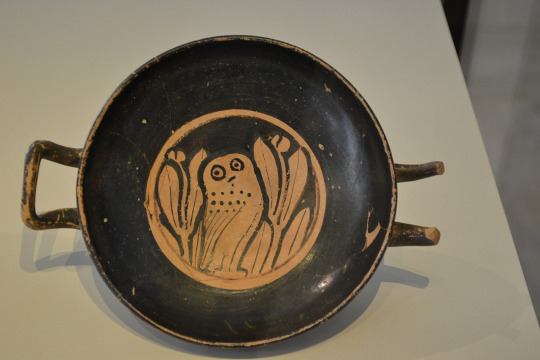
Attic red-figure kylix, owl between two olive branches. Found in the Mengíbar Necropolis. Archaeological National Museum of Spain.

Owl skyphos. From Most na SočI, end of the 5th century BC. Tolmin Museum.
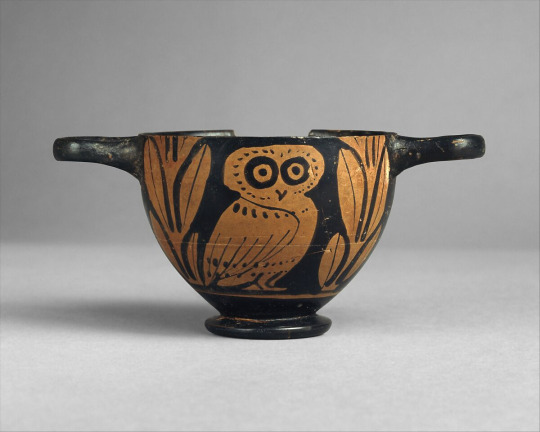
Owl skyphos. Attic, mid-5th century BCE. The Metropolitan Museum of Art.

Terracotta rim fragment of a kylix. Attic, dating 480–470 BCE. The Metropolitan Museum of Art.
I just wanted to share these because they also always make me smile. One of my favourite things about going to the museum has always been looking at sculptures and pottery.
#owl#ancient greece#archaeology#athena#greek mythology#greek pottery#greek art#ancient art#ancient artifacts#ancient history
2K notes
·
View notes
Text

Robin Hood and His Merry Men Entertaining Richard the Lionheart in Sherwood Forest by Daniel Maclise
42 notes
·
View notes
Text

Mycenaean daggers/swords, 16th - 14th century BC
National Archaeological Museum, Athens-Greece
4K notes
·
View notes
Text

~ The Eagle and the Snake.
Period: Age of Justinian I
Provinience: Istanbul, Great Palace Mosaic Museum (Büyük Saray Mozaikleri Müzesi).
Medium: Floor mosaic
508 notes
·
View notes
Text

Draped terracotta figurine depicting Eros, made in Tanagra, Boeotia, Greece, in the late 4th or early 3rd century BCE. Now in the Musée des Beaux-Arts de Lyon, France.
Eros, or Desire -- who, in Archaic and Classical Greece, had typically been visualized as a powerful, even frightening cosmic force (compare Hesiod's Theogony or Orphic cosmogonies) -- began in the Hellenistic period to be more frequently depicted as a whimsical being, the perpetually childish son of Aphrodite. His youth and fickleness are on clear display in the Argonautica of Apollonius Rhodius, in which his mother must bribe him with a golden ball to convince him to make Medea fall in love with Jason.
Tanagra became a major center of terracotta figurine manufacture in the Hellenistic period. Despite being mass-produced, Tanagran figurines often show a high degree of craftsmanship, as in the delicate drapery seen here.
Photo credit: © Marie-Lan Nguyen / Wikimedia Commons / Creative Commons Attribution 2.5 Generic
16 notes
·
View notes
Text
61 notes
·
View notes
Text



Byzantine Mosaic Panel of Hermes
Origin: Mediterranean Circa: 5th Century AD to 6th Century AD Dimensions: 69" Height x 39" Width (175 cm. x 99 cm) Medium: Marble
See More
343 notes
·
View notes
